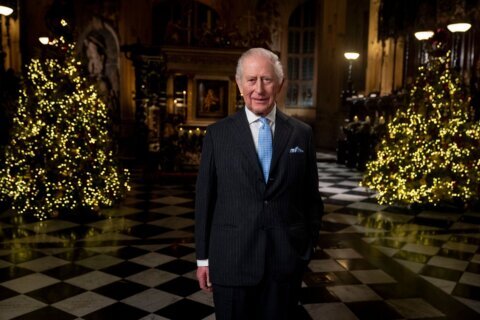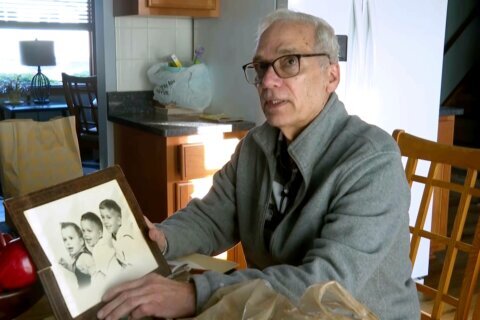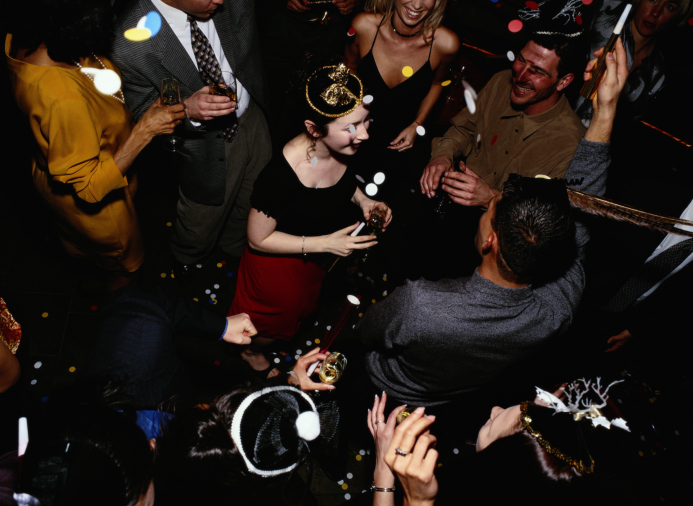Sometimes, thoughtful decor, elegant tableware and gracious entertaining can come together into something truly powerful.
An exhibit in New York argues that Dolley Madison’s prodigious domestic, social and political talents helped define and unite a fledgling nation.
Madison was the first First Lady to reside in the White House for a full term. She decorated three of its rooms, and boldly invited the public to dinner not once, but every Wednesday.
“A lot of Americans at that point did not even know how to use a fork, and some coachmen who entered the White House had never before sipped from porcelain cups,” says Valerie Paley, who curated “Saving Washington,” on view at the New-York Historical Society through July 30. Paley is director of the museum’s new Center for Women’s History, which aims to reveal the often overlooked stories of women who shaped American history.
Dolley Madison “understood the power of symbols, and showed what American refinement could look like,” Paley says. Through decoration and tableware, the First Lady showed that Americans could perform socially as well as politically on the national and international stage. She hosted a broad range of people at her dinners, from European foreign ministers to American congressmen and merchants.
The exhibit features a tiny, urn-shaped nutmeg grater, a marrow scoop, mustard and egg spoons, and an array of similarly specialized utensils of the era, all of which would have been novel items to many of her guests.
It also features the First Lady’s own silver snuff box, from which she generously offered snuff to guests, Paley says. Also on view are tea and coffee sets that belonged to the Madisons.
Instead of donning a tiara, as was customary, the socially savvy Madison wore a turban decorated with a towering feather plume, so that she could be easily located in a crowded room.
“She was an important example of what a woman could be in the United States at the time but, more importantly, she embodied the idea of American strength, virtue and honor,” says Paley, who calls Madison “one of the most influential women in America during the nation’s formative years, and a powerful force during a time when women were excluded from affairs of state.”
Her public White House dinners became known as the “Wednesday evening squeeze,” since so many people attended.
“It was an important part of her whole project of civility, and humanizing the office of the president. After a while, she didn’t even need the ads because everyone knew that that’s what was going on in Washington on Wednesdays,” Paley said.
At the “squeezes,” people of various backgrounds could circulate with diplomats, politicians and even the president himself.
“It’s important to remember that Washington was pretty desolate at the time,” Paley says. “It was literally a swamp and figuratively a desert, and Mrs. Madison helped create important informal networks and a sense of connection.”
The trappings of gentility required an enormous amount of physical work, museum experts noted: Crisp table linens had to be washed, bleached, ironed and mended; silver had to be cleaned and polished; delicate porcelain had to be dusted. The Madisons had a sizable staff — some of them experienced Washington servants who were paid wages, but most of them slaves.
A highlight of the exhibit is an interactive dining table meant to represent Dolley Madison’s table at a Wednesday gathering. Visitors are invited to take a seat and, using screens, take on the role of a character. Using prompts, the “diners” are invited to try to reach consensus on an issue of the day, deciding whether to use flattery, criticism or some other method to make their points.
“I would argue that in a larger sense, Washington was an aspirational place, while the two earlier capitals were not. This needed to be a congenial place for politicking as well as socializing, and it was through creating these wonderful spaces and important social events that she helped solidify not only Madison as president but the whole notion of unity in the fledgling United States,” Paley said.
While John Adams and his wife, Abigail, were the first presidential couple to live in the White House, Abigail Adams “was only there about a month and apparently hated it,” Paley says. Thomas Jefferson was a widower by the time he moved in and, wary of any semblance of aristocracy, he left the White House quite spartan.
The Madisons lived in the White House from 1809 to 1817.
Copyright © 2025 The Associated Press. All rights reserved. This material may not be published, broadcast, written or redistributed.







